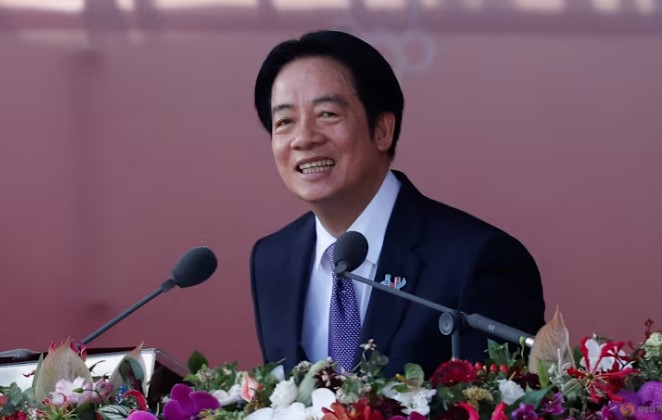President Lai Ching-te announced on Friday, October 10, 2025, that Taiwan will strengthen its defense capabilities with a new multi-layered air defense system called T-Dome. This move comes as Taiwan faces increasing military and political pressure from China, which claims the island as its own territory despite strong objections from the democratically governed island.
Taiwan Ramps Up T-Dome Defense Spending Amid Rising Tensions
President Lai, speaking during his National Day address, emphasized that Taiwan will significantly increase its defense spending to protect the island from potential threats. He revealed that a special budget proposal for military spending will be presented by the end of the year, reflecting the government’s commitment to national security.
“The increase in defense spending has a purpose; it is a clear necessity to counter enemy threats and a driving force for developing our defense industries,” Lai said. The announcement highlights Taiwan’s determination to strengthen its armed forces and protect citizens’ lives and property.
Taiwan has already been modernizing its military, but it faces a China with a far larger military. Beijing is rapidly expanding its arsenal, including stealth fighter jets, aircraft carriers, and a wide array of missiles. Against this backdrop, Taiwan is accelerating its defense programs to maintain a credible deterrent.
‘T-Dome’ Aims to Be Taiwan’s Iron Dome
While details on the new “T-Dome” system remain limited, reports suggest that Taiwan aims to create a system similar to Israel’s Iron Dome. The project will focus on building a rigorous air defense network featuring multi-layered defense, advanced detection systems, and effective interception capabilities.
President Lai said, “We will accelerate our building of the T-Dome, establish a rigorous air defense system in Taiwan with multi-layered defense, high-level detection, and effective interception, and weave a safety net for Taiwan to protect the lives and property of citizens.” His remarks received applause from the audience.
China blacklists U.S. naval shipbuilder Huntington Ingalls in fury over Taiwan weapons sales
Currently, Taiwan relies on U.S.-made Patriot missile systems and domestically developed Sky Bow missiles for air defense. Last month, Taiwan unveiled a new missile, Chiang-Kong, at a major arms exhibition in Taipei. The missile can intercept mid-level ballistic missiles and reach higher altitudes than the existing Patriot systems.
By combining new and existing technologies, Taiwan aims to create a stronger and more resilient defense system to respond to possible aerial threats from across the Taiwan Strait.
Call for Peace and Lessons from History
Alongside the announcement, President Lai urged China to renounce the use of force to change the status quo across the Taiwan Strait. He reminded citizens of the importance of learning from history, referencing the suffering caused by wars in the past.
“Looking back at World War Two, we see that so many experienced the suffering of war and the pain of invasion. We should learn from these lessons and ensure that the tragedies of history are never repeated,” Lai said.
Black Moon hack reveals secret Russian military support for China, raising Taiwan concerns
Taiwan’s National Day commemorates the 1911 uprising that ended China’s last imperial dynasty and led to the establishment of the Republic of China. Subsequently, after the Chinese Civil War, the Republic of China government relocated to Taiwan in 1949, where it continues to exist formally under the same name.
Meanwhile, there was no immediate response from Beijing to President Lai’s announcement. The Chinese government has consistently labeled Lai as a “separatist” and has rejected previous offers from Taiwan to engage in talks. That is to say, Beijing continues to view Taiwan’s moves with suspicion and maintains its long-standing stance.
Taiwan’s launch of the T-Dome system, in addition to its increasing defense spending, reflects the island’s ongoing efforts to modernize its military and secure its population amid growing regional tensions. Furthermore, these actions demonstrate Taiwan’s determination to strengthen its defense capabilities and protect its citizens.

